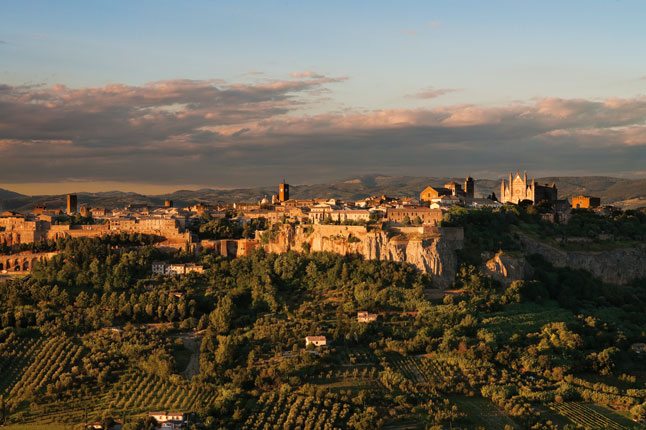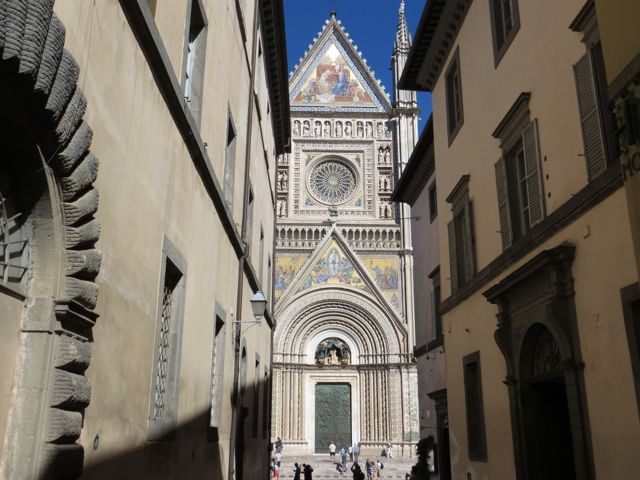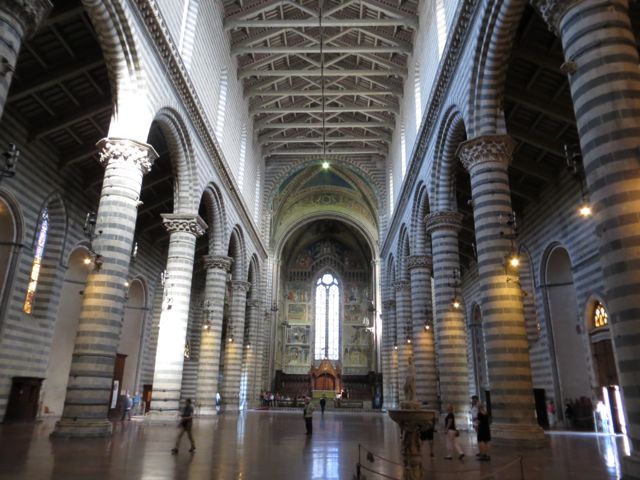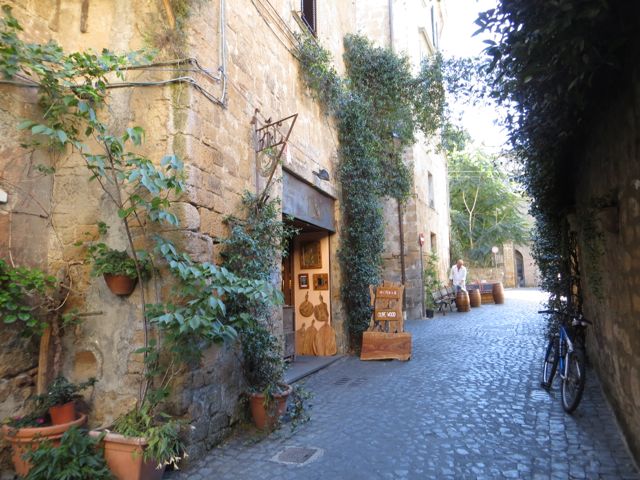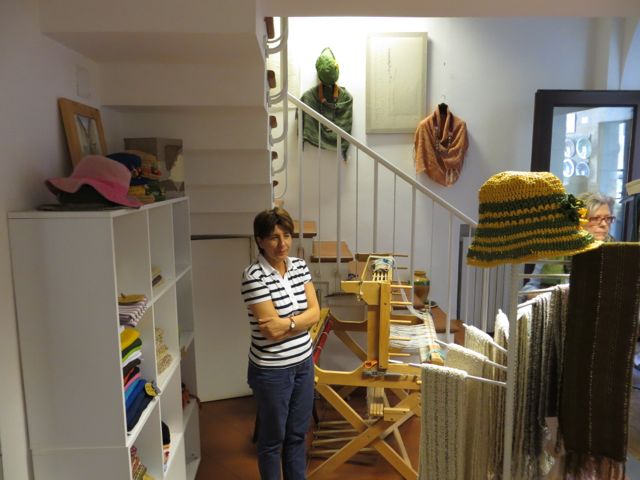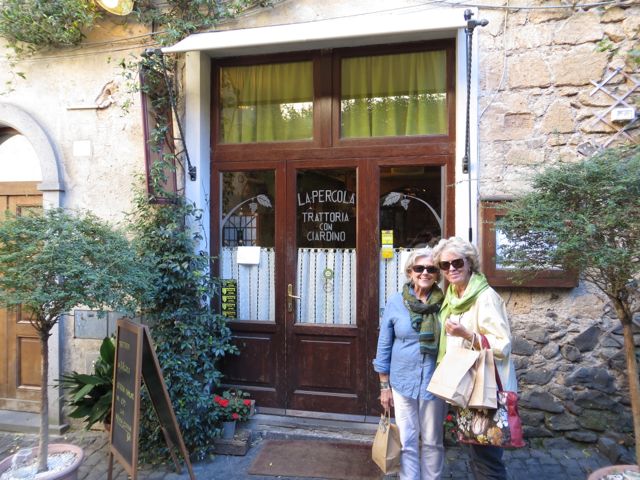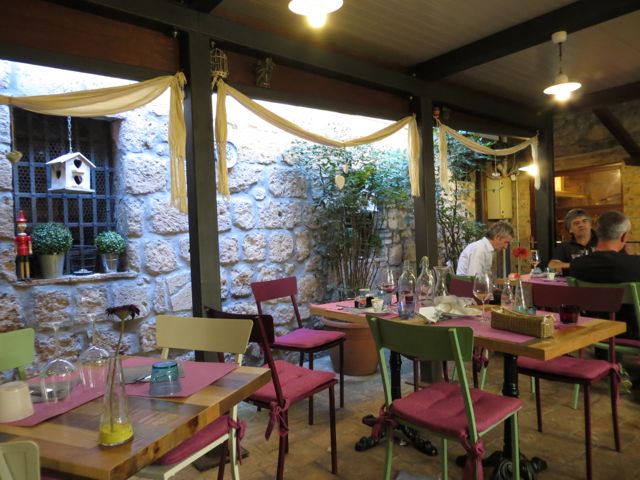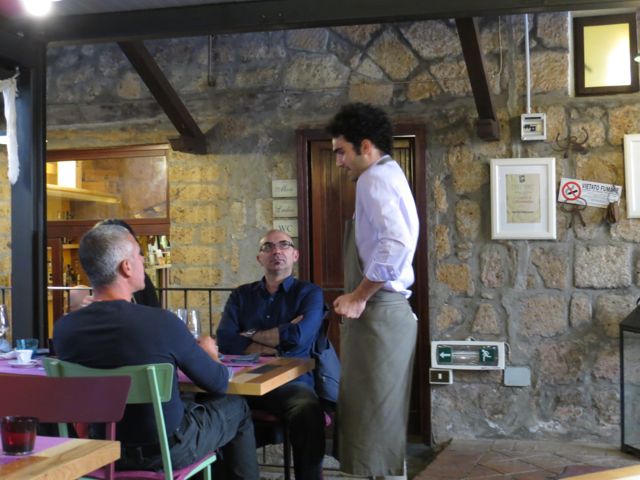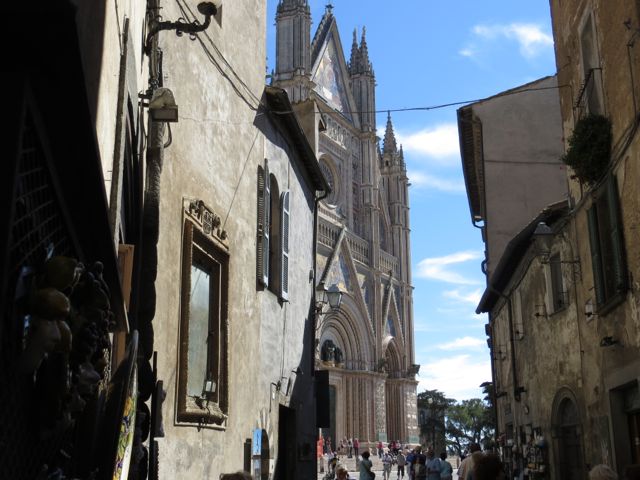Orvieto is a sort of magical floating island. It floats above the Tiber river valley on a table top, 1000 feet above the valley below. The whole city spreads across this volcanic eruption that provided both a 100% safe and secure location but also very special building materials from the volcanic rock that forms it. Thus the city very early on had not only the protection of the high location, but also the protection of solid rock walls that made the city totally impregnable. Enemies could not conquer it because it not only had a great location but it also had its own water supply. Here it sits like a land of golden angels dancing above the heads of the mortals below. Look at the great high tufa walls with the Cathedral shimmering in the setting sun.
The center of the city is one of the most beautiful cathedrals in all of italy. The facade has a brilliant architectural balance, shining mosaics up at the top, and and a sculptural program carried out by the architect Lorenzo Maitani. Here you see it from the little street right in front of the church and this tight street has always created great photos of this beautiful facade.
And the inside is also a masterpiece of Italian Gothic architecture.
Our visit to Orvieto was made so much better by accidentally turning up this tiny little street called Via dei Magoni and stopping at the weaving shop of Maria Gagliano.
Maria weaves some of the most beautiful things you will ever see. Here she is in her shop with her loom in the corner.
And as we talked and shopped we ask her about where to have lunch and fortunately there was a great place right up her street: Trattoria La Pergola, a family run restaurant founded by grandfather Enrico Materazzo and now of many generations with all the generations working in the restaurant. It has a wonderful welcoming atmosphere with a beautiful garden all enclosed and private, but full of flowers and plants. Here we are in Via dei Magoni about to enter La Pergola. You Can see that sister Patricia and Peggy are loaded down with purchases from Maria’s loom.
Here is the inside of La Pergola. You have to remember this little street and these great stops on Via dei Magoni for your own visit to Orvieto. The whole afternoon was so much better for knowing Maria and La Pergola. The food was fabulous and very reasonably priced.
But the fun was watching all the people and the Materazzo family as they handled the questions and comments. The place was full of Orvitani; locals, and that is always the proof of excellence. Here is the Materazzo grandson giving an agitated reply to some food question.
There is so much more to tell you about in Orvieto, but you will have to wait until February for the rest of it. Goodbye to Orvieto.
